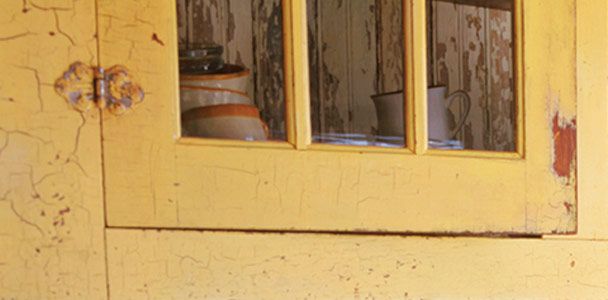We may be compensated if you purchase through links on our website. Our team is committed to delivering honest, objective, and independent reviews on home products and services.
Removing painted hinges from wood cabinets can be challenging, especially when dealing with multiple layers of paint accumulated over the years. This process requires patience, precision, and the right tools to avoid damaging the hinges or the surrounding wood. Whether you’re planning to refinish your cabinets or simply want to restore your hardware’s original look, this guide walks you through safe hinge removal.
Tools & Materials to Remove Painted Hinges From Wood Cabinets
Before you begin, gather the following tools and materials for a smooth and safe removal process:
- Cleaning solution
- Drop cloth or plastic sheeting
- Face mask with respirator
- Paint stripper (optional)
- Protective eyewear
- Scratch awl
- Screwdriver
- Small brush or toothbrush
- Soft cloth
- Utility knife
- Vacuum with HEPA filter
- Wood mallet
- Work gloves
Removing Painted Hinges From Wood Cabinets
To remove painted hinges from wood cabinets without damaging the wood, follow these five steps:
Step 1: Clear the Screw Slots
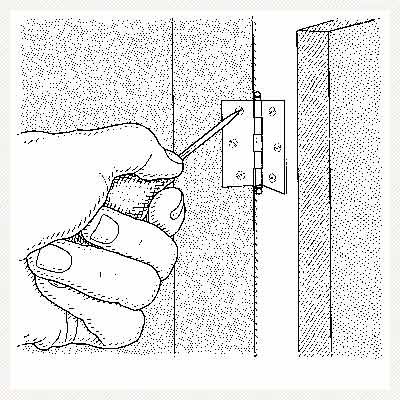
The goal of this step is to break through the paint layer covering the screw slot. Be careful not to apply too much pressure, as this could damage the screw or the surrounding wood.
To do this:
- Put on your protective gear, including the face mask with respirator, eyewear, and work gloves.
- Lay down a drop cloth or plastic sheeting under the work area to catch any paint chips.
- Take a sharp scratch awl and position it at an angle in the center of the screw slot.
- Gently tap the awl with a wood mallet, first in one direction, then the other.
- Repeat this process for all screwheads on the hinge.
Step 2: Remove Paint
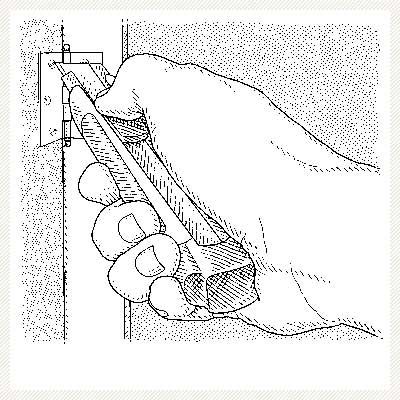
After clearing the slots, you’ll need to remove any remaining paint for better access to the screws. Work slowly to avoid scratching the wood surface.
Use a utility knife to carefully scrape away any remaining paint around the screw slots and hinge edges. When you’ve removed as much paint as possible, use a vacuum equipped with a HEPA filter to clean up the paint chips and dust.
For stubborn paint, apply a mild paint stripper according to the manufacturer’s guidelines, and then gently remove the loosened paint.
Step 3: Break the Paint’s Grip
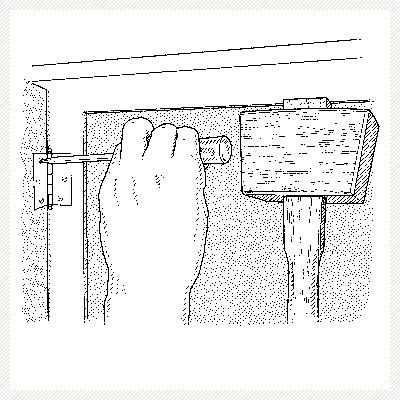
To break the paint’s grip/coating on the screw, place the tip of a screwdriver into the clean slot. Give the screwdriver a light tap with a wood mallet.
This shock should break the paint’s grip on the screw, making it easier to remove. If the screw doesn’t budge after the first tap, try again with slightly more force.
Step 4: Loosen the Hinge
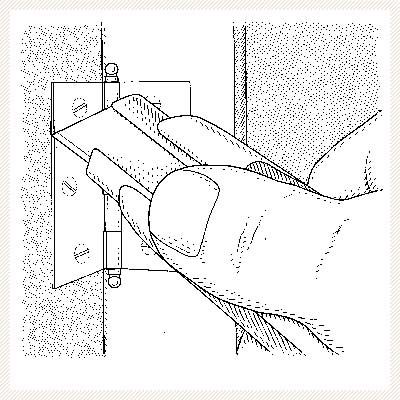
Once the screws are out, gently remove the hinge. Slowly pry it away from the wood, being careful not to chip the surrounding paint or damage the wood surface.
If the hinge doesn’t come off easily, use a utility knife to carefully cut around each leaf of the hinge. You may need to apply a small amount of penetrating oil if it proves to be stubborn.
Step 5: Clean the Hinges
If the hinges are in good shape and you’d like to reuse them, you’ll need to:
- Soak the hinges in a solution of warm water and mild dish soap for about 30 minutes.
- Gently scrub away any remaining paint with a soft-bristled brush.
- Rinse the hinges thoroughly with clean water and dry them completely with a soft cloth.
- Apply a thin coat of metal polish to restore shine and protect against future corrosion.
- Store the cleaned hinges in a dry place until you’re ready to reinstall them.
Preparing the Cabinet for Refinishing
With the hinges removed, you can also use this time to prepare your cabinets for refinishing. Fill any damage to the cabinet with wood filler and any screw holes if you’re planning to relocate the hinges. You’ll also need to sand cabinet surfaces to remove any remaining paint or varnish and clean away any dust or debris.
Once you’ve cleaned away any dust or debris, your cabinets are ready for the primer and new paint.
